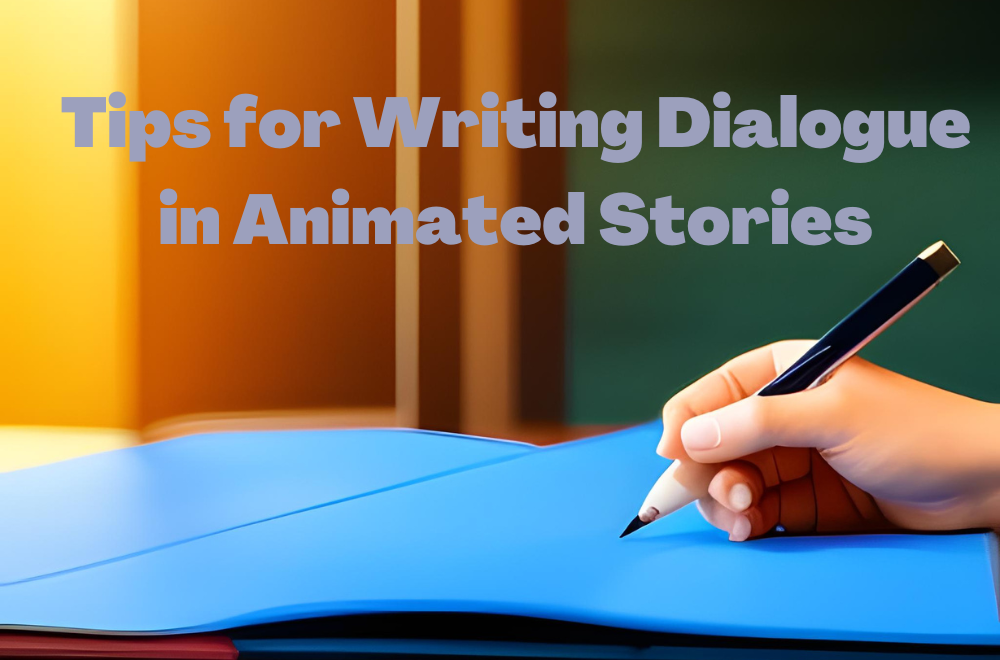When it comes to creating engaging animated stories, well-crafted dialogue plays a crucial role in capturing the attention of the audience and bringing the characters to life. Dialogue serves as a powerful tool to convey emotions, advance the plot, and develop character relationships. In this article, we will explore some valuable tips to enhance your dialogue writing skills and make your animated stories more compelling and memorable.
Importance of Dialogue in Animated Stories
Dialogue serves as the primary means of communication between animated characters. It enables the audience to connect with the characters on an emotional level, understand their motivations, and follow the narrative arc. Well-written dialogue, whether in a novel, screenplay, or animated story, can add depth and authenticity to the story, making it more relatable and engaging for the viewers. Whether you’re crafting dialogue for a book, a movie script, or a cartoon, the power of compelling conversations cannot be underestimated. Dialogue that is carefully constructed and thoughtfully written increases the chances of getting a book published or gaining recognition in the world of animation.
Understanding Character Voices
Creating distinct voices for each character is essential for making them memorable and recognizable. Each character should have a unique speech pattern, vocabulary, and tone that aligns with their personality and background. Consistency in dialogue is also crucial, as it helps maintain believability and ensures that the characters’ voices remain consistent throughout the story.
Creating Distinct Voices
When developing dialogue for your characters, consider their individual traits, such as their age, profession, background, and personality. Incorporate these elements into their speech patterns, word choices, and mannerisms to make them stand out from one another. For example, a wise old mentor might use eloquent language and speak in metaphors, while a young and energetic character might use more slang and informal language.
Consistency in Dialogue
While creating distinct voices, it is equally important to maintain consistency in each character’s dialogue. Ensure that the way they speak remains consistent throughout the story, unless a deliberate change occurs due to character development. Consistency helps viewers connect with the characters and fosters a sense of familiarity.
Writing Natural and Engaging Dialogue
To make your dialogue sound natural and engaging, it is essential to study real conversations and understand how people speak in different situations. By observing and analyzing real-life interactions, you can gain insights into the nuances of dialogue and incorporate them into your animated stories. Here are some tips for writing natural and engaging dialogue:
Studying Real Conversations
Pay attention to the flow of conversations, the use of pauses, and the rhythm of speech. Notice how people interrupt each other, use colloquialisms, and convey emotions through their tone and choice of words. By studying these aspects, you can infuse authenticity into your animated dialogue.
Using Subtext
Subtext refers to the underlying meaning and unsaid thoughts behind a character’s dialogue. It adds depth and intrigue to the story, allowing viewers to read between the lines. Incorporating subtext in your dialogue can create tension, reveal hidden agendas, and add complexity to the characters’ relationships. Instead of explicitly stating everything, allow the audience to decipher the underlying meaning through subtle cues, gestures, and implied messages. This not only engages the viewers but also adds layers of depth to your animated story.
Incorporating Humor
Humor can be a powerful tool in dialogue writing, as it entertains the audience and adds a light-hearted element to your animated stories. Incorporate witty remarks, clever wordplay, and comedic timing to inject humor into your characters’ conversations. Be mindful of the tone and context of your story to ensure that the humor aligns with the overall narrative.
Effective Dialogue Formatting
Proper formatting of dialogue is crucial to ensure clarity and readability. Consider the following tips for effective dialogue formatting in your animated stories:
Using Proper Punctuation
Use quotation marks to enclose spoken words, and use punctuation marks such as commas, question marks, and exclamation points to indicate the tone and intent of the dialogue. Proper punctuation helps readers understand the flow of the conversation and interpret the characters’ emotions accurately.
Formatting Dialogue Tags
Dialogue tags are used to attribute spoken words to specific characters. Use tags such as “he said,” “she asked,” or “they exclaimed” to indicate who is speaking. Place these tags after the spoken words, separated by a comma or a period. Avoid excessive and repetitive dialogue tags, as they can distract the reader from the actual conversation.
Balancing Dialogue and Visuals
In animated stories, dialogue should complement the visuals rather than overpower them. Striking a balance between dialogue and visuals is crucial to maintain a harmonious storytelling experience. Consider the following tips to achieve this balance:
Avoiding Excessive Dialogue
While dialogue is essential, too much of it can overwhelm the viewers and overshadow the visual elements of your story. Use dialogue strategically to convey crucial information, advance the plot, or highlight character relationships. Allow the visuals to speak for themselves in certain moments, creating a dynamic interplay between dialogue and visuals.
Visualizing Non-Verbal Communication
Not all communication needs to be expressed through dialogue. Utilize the power of non-verbal communication, such as facial expressions, body language, and visual cues, to convey emotions, intentions, and reactions. Let the characters’ actions and gestures speak volumes alongside their dialogue, enriching the overall storytelling experience.
Editing and Polishing Dialogue
Editing and polishing your dialogue is essential to ensure clarity, coherence, and effectiveness. Here are some tips to refine your dialogue:
Cutting Unnecessary Dialogue
During the editing process, review your dialogue and identify any parts that may be repetitive, irrelevant, or slowing down the pacing of the story. Trim and refine the dialogue to maintain a tight narrative and keep the viewers engaged.
Testing Dialogue with Actors
If possible, consider conducting table reads or working with voice actors to bring your dialogue to life. Hearing the dialogue spoken aloud can help you identify any areas that may sound unnatural, awkward, or unclear. Collaborating with actors allows you to fine-tune the dialogue and make it more authentic and impactful.
Conclusion
Writing effective dialogue in your animated stories is a skill that requires attention to detail, an understanding of character voices, and a balance between engaging conversation and visual elements. By following the tips outlined in this article, you can create dialogue that captivates your audience, adds depth to your characters, and enhances the overall storytelling experience.


